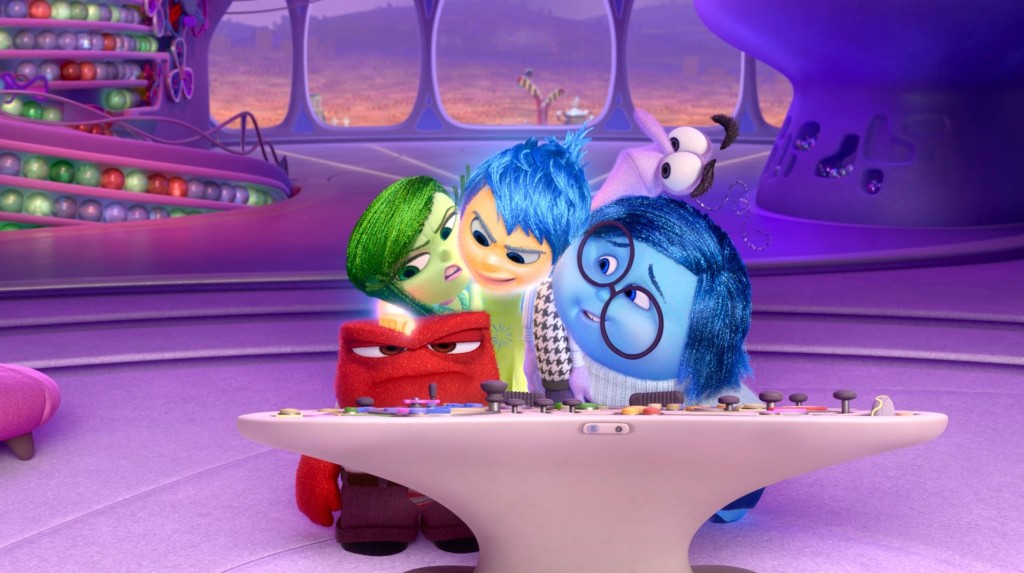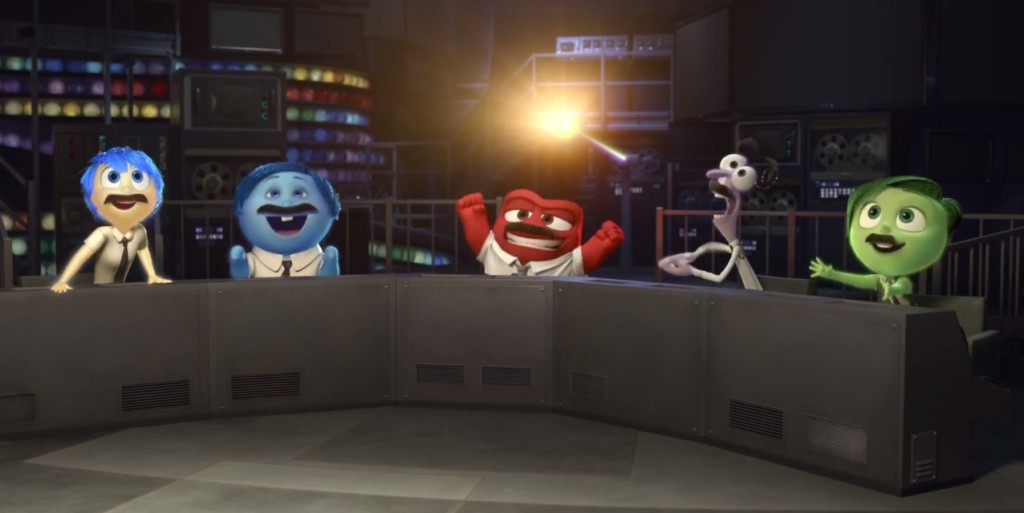Guest writer Niels Putman reviews Pixar’s latest adventure “Inside Out”, which takes us inside the mind of 11-year-old girl Riley as her emotions guide her through childhood.
Balancing the joyful with the sad has always been one of Pixar’s prime pursuits. This takes a meta turn in Inside Out, where we go inside the mind of an 11-year old girl and discover how her emotions are trying to get along, making growing up a sometimes-painful experience, which we can all relate to. But in the end, this is a much-needed story about anxiety and lingering depression. The world’s most successful animation studio has furnished a wondrous, inventive tale for children and their parents, a light-hearted comedy with some pretty heavy stuff on the inside that tells an emotive story on what makes it all so emotional to begin with.
Nothing but superlatives are being used to describe Inside Out and rightfully so, because the studio’s fifteenth installment is another milestone in animation. Steering the ship this time is Pete Docter, one of Pixar’s main collaborators who previously directed such hits as Monsters, Inc. and Up (which earned him an Academy Award). Inspired by his own relationship with his daughter, Docter got the idea of telling the intimate story of the emotions inside the head of a preteen girl more than five years ago. Co-written together with Meg LeFauve, Josh Cooley and Ronaldo Del Carmen (and also co-directed with the latter), Inside Out is about Riley (Kaitlyn Dias) who is forced to move from her hometown in Minnesota to the bleak and brown San Francisco. She consequently has a hard time settling down, and is left feeling isolated.
Remember how Merida was Pixar’s first female lead in Brave? Luckily we didn’t have to wait too long to get the next woman on top, since Inside Out has two female leads. This time, we also meet Joy, one of Riley’s five emotions, next to Sadness, Fear, Anger and Disgust. Joy is in charge and has but one main goal: to keep Riley happy. Since Joy is part of Riley and vice-versa, she also gets tested and goes on a journey that will teach her a thoughtful lesson. When per accident Riley’s core memories get on the loose, Joy and Sadness feel forced to get them back, leaving only Fear, Anger and Disgust to take control of Riley’s life, resulting in her personality slowly starting to fade (yes, it’s that gloomy).
Given our society’s predominate occupation with ‘being happy’ and the still very much alive taboo on depression and social anxiety, this film is not only a moral tale, but a very welcome one on the case. Even though Docter claims the film is not about (childhood) depression, one cannot ignore the metaphors that refer to it thematically. More often than is good for us, we find ourselves chasing our own luck, pushing away any form of depression, leaving such issues ignored and un-discussed. Joy will soon learn that some memories can be blue too, which is also something we might forget. Pixar’s moral message in the end might sound bittersweet, but is of much greater importance than they might even claim themselves.
Albeit the plain morality, this isn’t a depressing therapy session. It’s remarkable that Pixar pulls off an exciting and thought-provoking film that is as hilarious as it is sad. Despite the heavy stuff on the inside, Inside Out is extremely funny and imaginative. In fact, this could effortlessly be Pixar’s funniest feature to date, responding to common abstractions of the mind with great and familiar originality. They have always been keen on exploring worlds that none of us have truly seen, whether that world is entirely fictional or blends into our own society. In tradition, Joy and Sadness take us to never-before-seen places such as Imagination Land, Dream Productions, Goofball Island & Long Term Memory. Though scientifically hard to explain, they are all in the mind somewhere and Pixar does a great effort in delivering some really creative keys to some very universal topics, using an animation style that celebrates saturated simplicity and the abstract.
Amy Poehler is joyous as Joy (fans of her television work will surely spot a lot of resemblances with her Parks & Recreation-alter-ego Leslie Knope), and the voice-cast that also includes Phyllis Smith (Sadness), Bill Hader (Fear), Lewis Black (Anger) and Mindy Kaling (Disgust) does an incredible job in creating a bunch of remarkable and memorable characters. Even Riley’s imaginary friend Bing Bong (slightly out of place at first) will eventually win grown-up skeptics over. Michael Giacchino, who brought strings and keys to previous Pixar-films such as The Incredibles and Up, is back again and has written a resonating, sometimes chilling score, balancing out all said emotions and growing pains flawlessly.
Balance is therefore exactly what has been done right in Pixar’s better previous work and it’s what makes Inside Out instantly one of their best. It had Cannes critics laughing out loud from the first until the very last frame, but it also had them secretively weeping in their seats somewhere in between. Only time will tell how much this will go down in records as a Pixar classic, but for now, it seems the animation studio is right back at the top of their game, delivering a close-to-perfect crowd-pleaser that’s highly enjoyable throughout.
Niels Putman is a film critic based in Belgium. Follow him on Twitter @NielsPutman.





Inside Out is amazing. The amount of emotion, insight and catharsis on offer in this animation puts most serious adult films to shame.